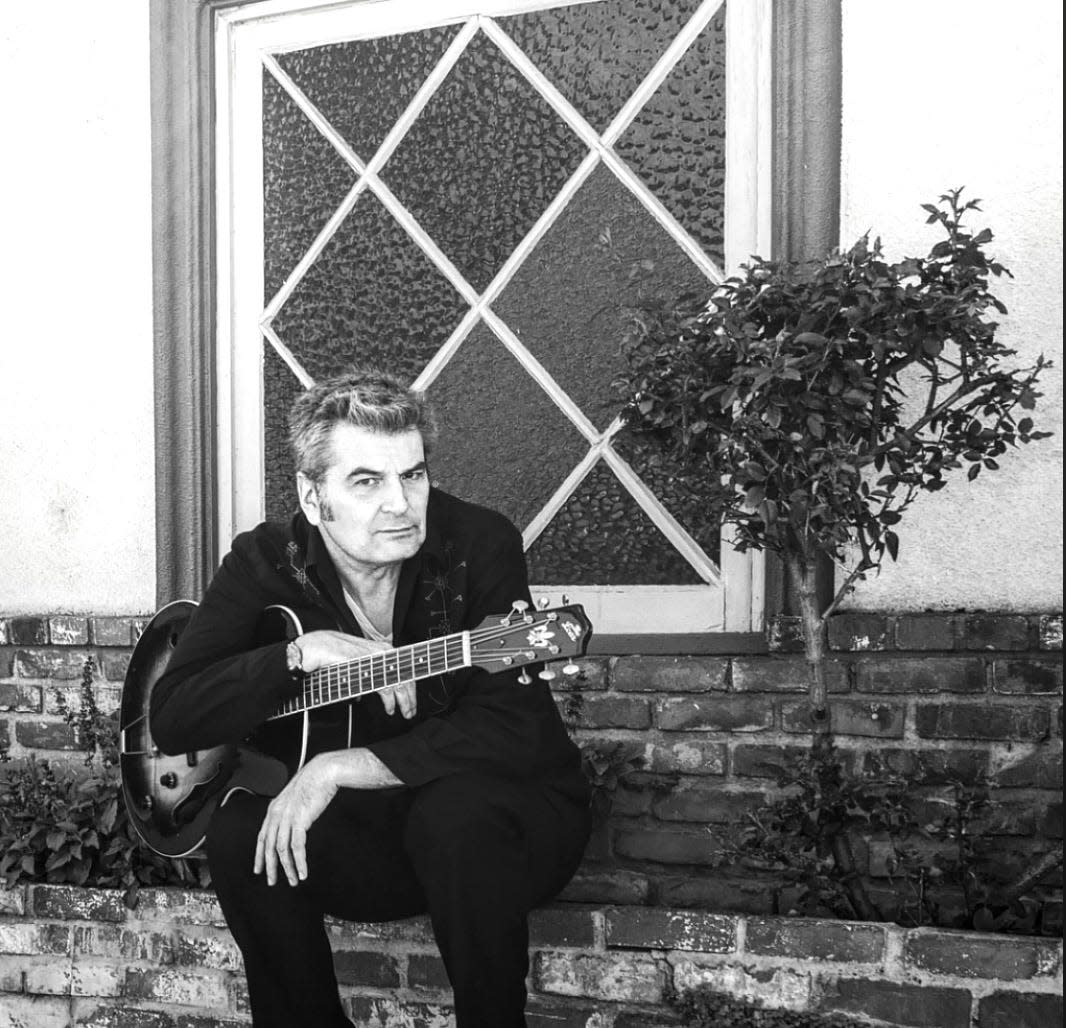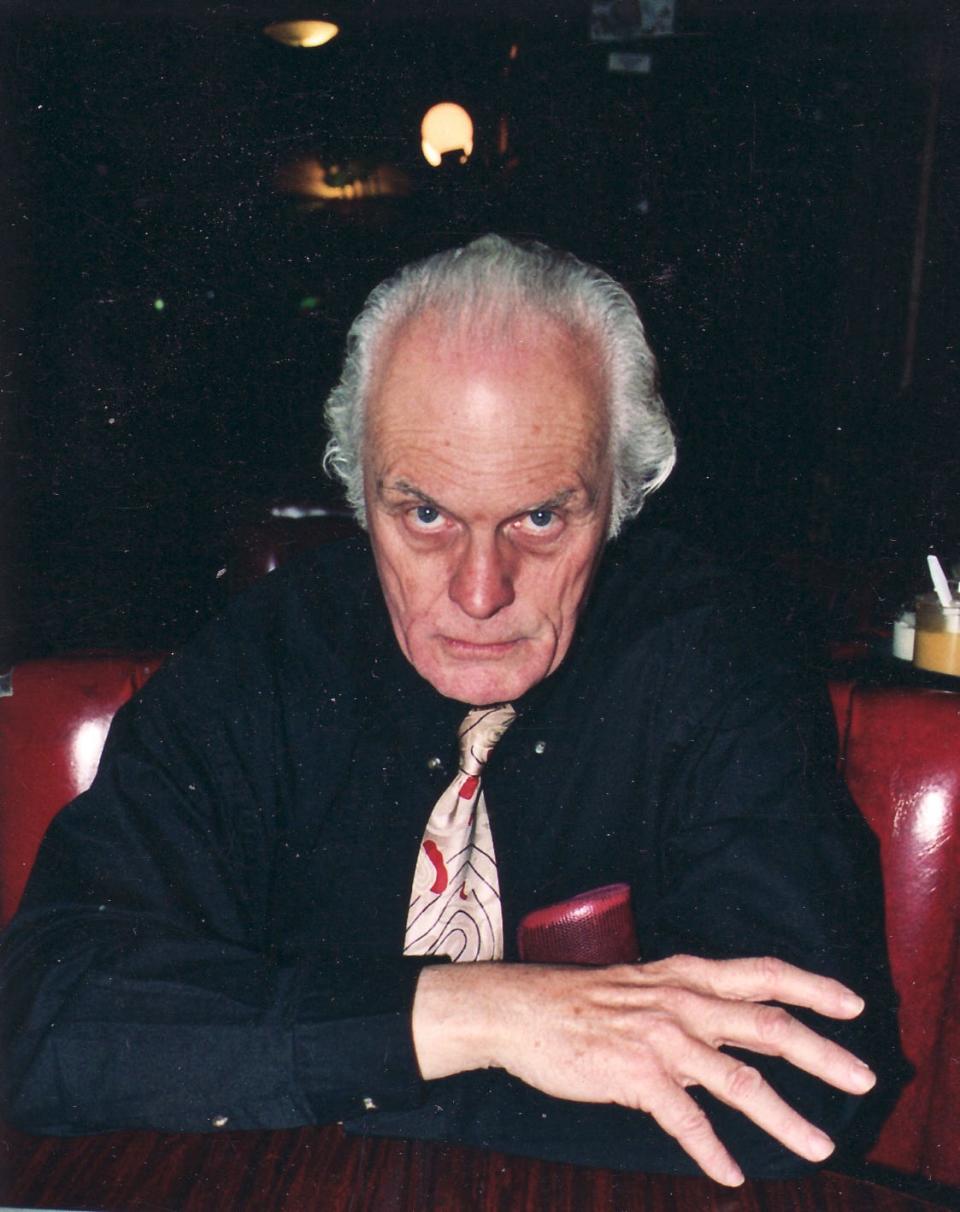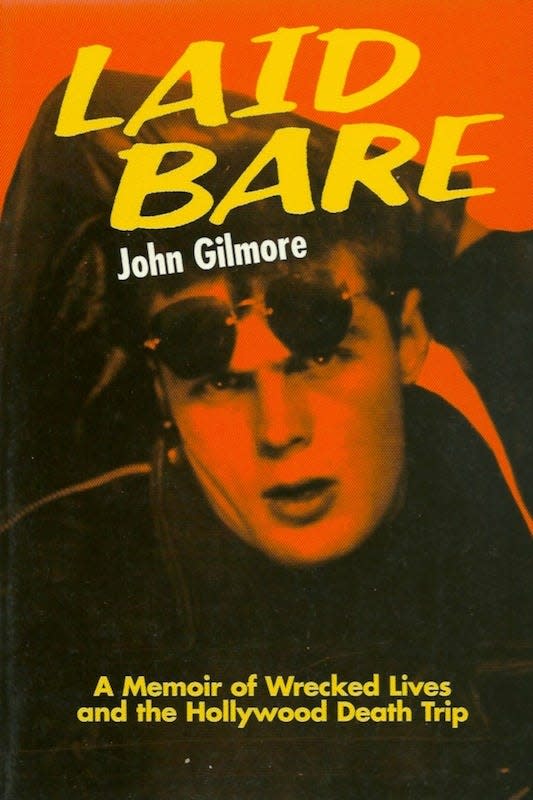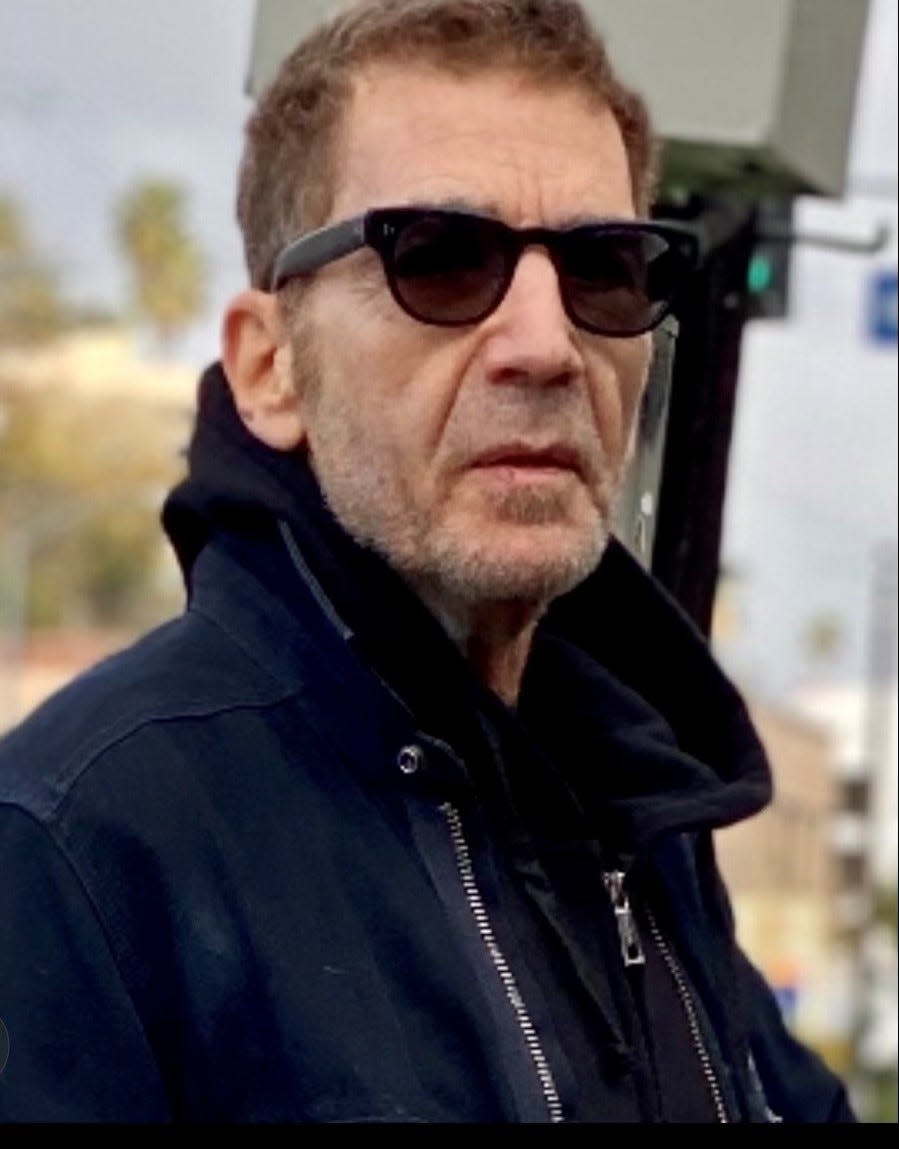Band leader and novelist to feature crime writing-themed show at May Jazzville event

- Oops!Something went wrong.Please try again later.
- Oops!Something went wrong.Please try again later.
The late crime writer John Gilmore wrote about his subjects — including Charles Manson, The Black Dahlia Murder and the dark side of Hollywood — in an eccentric and esoteric manner.
This month, musician Skip Heller and his Hollywood Film Noirchestra, novelist Jerry Stahl and Amok Books publisher Stuart Swezey are presenting some of Gilmore’s noir writings through a musical genre that goes hand-in-hand with crime: jazz.
On May 26, the Hollywood Film Noirchestra will provide a jazz soundtrack as Stahl reads some of Gilmore's writings at Jazzville inside Agua Caliente Casino Palm Springs.
Swezey, who produced the Desolation Center concerts in Johnson Valley and Box Canyon during the ’80s, said it’s “very site specific” to perform this kind of show in a Palm Springs casino.
Many noir crime films of the ’40s and ’50s such as “A Streetcar Named Desire,” “Private Hell 36,” “A Touch of Evil” and “Sweet Smell of Success” featured jazzy soundtracks. The 1959 courtroom drama “Anatomy of a Murder” featured scenes of James Stewart playing jazzy piano compositions.
But why do crime and jazz go hand-in-hand?

Prohibition brought in a wave of illegal activity and an underground club culture run by bootleggers and the mob. Jazz legends Louis Armstrong and Duke Ellington and their big-band groups would often perform at venues in Harlem such as Madden’s Cotton Club and Connie’s Inn, which were owned by bootlegger Connie Immerman.
But as jazz evolved and “bebop” musicians such as Dizzy Gillespie, Thelonious Monk and Charlie Parker arrived on the scene, so did noir films.
“(Film companies) didn’t spend a lot of money on those movies, and the effect of having a jazz group instead of a chamber music ensemble or orchestra made it cheaper, and as we know, cheap means realist,” Heller said.
Heller said a lot of famous jazz musicians were also junkies, as seen in the 1955 film “The Man With The Golden Arm” about a heroin-addicted jazz drummer played by Frank Sinatra.
“Art Pepper (saxophonist) and Red Rodney (trumpeter) found themselves imprisoned here and there (for drug offenses), so that adds to the criminal flavor of some jazz music,” Heller said.
Gilmore wrote about Charles Schmid and Charles Manson
Before he was a crime writer, Gilmore was an actor and appeared on TV shows such as “Naked City,” “The Lineup” and “Bonanza.” He also had an uncredited role in the 1964 cult-film “Shock Treatment.” In 1962, he began penning sleazy-pulp novels for Lou Kimzey’s France Books in North Hollywood.
Gilmore’s father was a Los Angeles police officer, which gave him extensive knowledge of police procedures and investigations, and access to detectives like John “Jigsaw John” St. John.
“He was a self-taught and talented author getting into these really dark places,” Swezey said.
His first give into writing about crime was in 1970, when Playboy hired him to cover the trial of Charles Schmid, the “notorious pied piper of Tucson” who murdered three (possibly a fourth) young women in 1964-65. Gilmore gained access to Schmid and his family members, and secured rights for the book “The Tucson Murders.”
The following year, Gilmore wrote “The Garbage People” about ’60s cult leader and convicted murderer Charles Manson. A revised version of the book is available through Amok Books. Swezey sand it’s the first nonfiction book about the Manson case.
“The Charles Schmid book was his entry into Charles Manson,” Swezey said. “Manson was like, ‘I like what you wrote about Schmid.’ He got the first face-to-face interview with Manson after the murders.”
Gilmore claimed to have met Elizabeth Short, also known as “The Black Dahlia,” when he was 11 years old. Short was murdered in 1947 and her murder remains unsolved. “Severed: The True Story of the Black Dahlia Murder” was released in 1994.
Some of his acquaintances through acting, Marilyn Monroe and James Dean, would become the subjects of his later books. Gilmore’s 1997 book, “Laid Bare: A Memoir of Wrecked Lives and the Hollywood Death Trip,” goes into the dark side of celebrity status and fame.
“He was a very Los Angeles-like personality and a one-of-a-kind blend of all these elements, and part of it is the darkness of Hollywood,” Swezey said. “It’s a dream factor on one side, but it’s internally a nightmare. I think all of those things are part of the fascination of what this event is about.”
Gilmore died in 2016. The University of California Los Angeles maintains a collection of his manuscripts and original writings in its Research Library.

Heller recorded with Gilmore in 2001
This isn’t the first time Heller has worked on a music project related to the works of John Gilmore. He collaborated with him on bringing music to the 2001 spoken word album “Laid Bare.”
“I’m glad to revisit that now because a lot of people like that record,” Heller said. “I’m a better bandleader and composer now than I was then. To get a second bite of the apple and have a better idea of how to involve those texts, because John’s way of writing is so married to the way this music sounds.”
Heller has worked with artists such as Yma Sumac, Bootsy Collins and Joe Bataan. He and his band, The Reckless Night Ensemble, have performed at Jazzville before and did a show featuring music by the late Lalo Guerrero, along with programs of Henry Mancini, Johnny Mandel and others.
But putting a dark writer’s stories to haunting Hollywood music requires a voice, and Swezey suggested Stahl, who authored books such as “I, Fatty” “Happy Mutant Baby Pills” and “Bad Sex on Speed.” Heller thought it was a perfect fit.
“Jerry was the obvious person because I heard him interviewed, and he had a great voice that sounded depraved and exasperated,” Heller said. “There was a sort of weariness to it. You can’t do this like dinner theater and you need a certain amount of the gravitas that comes with multiple divorces.

Stahl said that while he’s never fronted a band before, he’s “honored” to read Gilmore’s parts.
“I’ve always liked outsiders and weirdos, and being one myself for much of my life, we have a weird kind of heart,” Heller said. “Whether it’s vented, true that all this happened, it almost doesn’t matter. (Gilmore) was a scenester. He didn’t get into the belly of the beast. He was underneath it, which is where the real action happens.”
If you go
What: Hollywood Film Noirchestra
When: 7 p.m. Thursday, May 26
Where: Agua Caliente Casino Palm Springs, 401 E. Amado Road, Palm Springs
How much: $10 to $65
More information: jazzvillepalmsprings.com
This article originally appeared on Palm Springs Desert Sun: Crime writings of John Gilmore to be featured at May 26 Jazzville show

